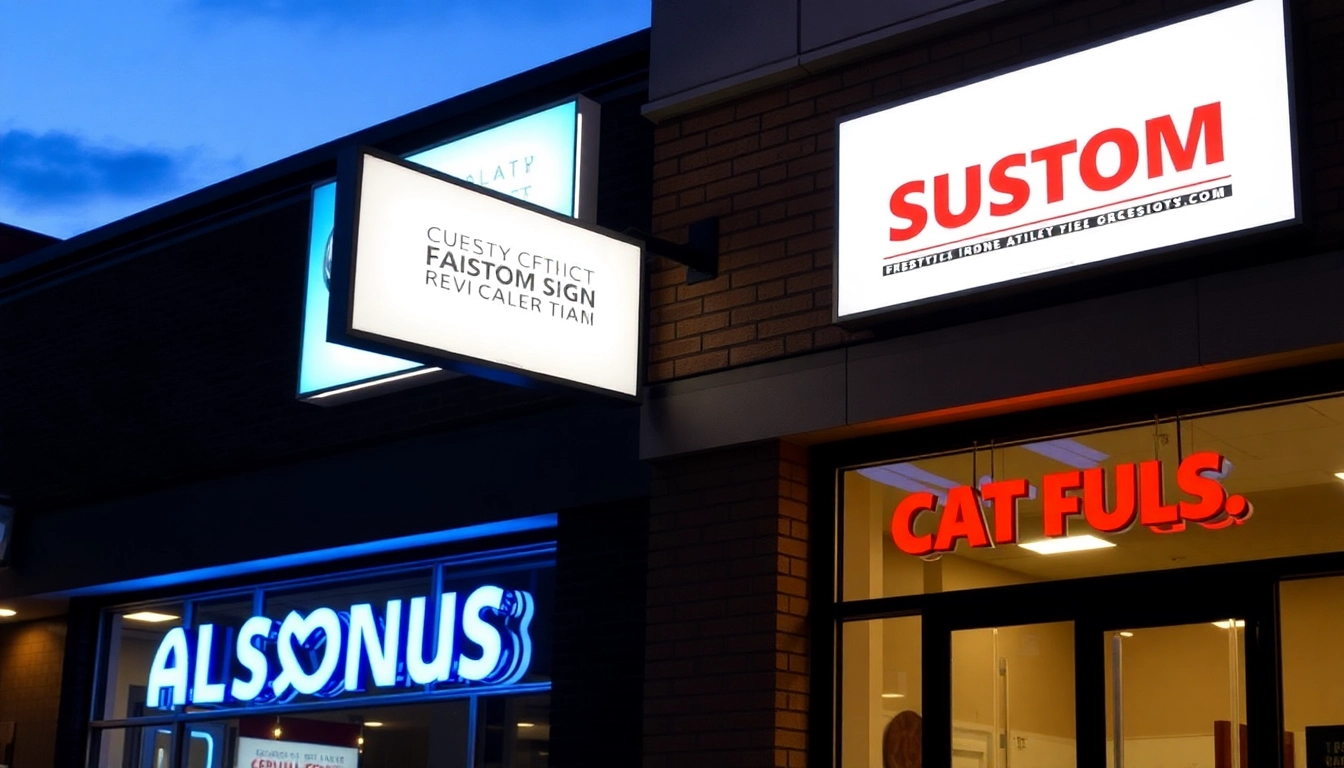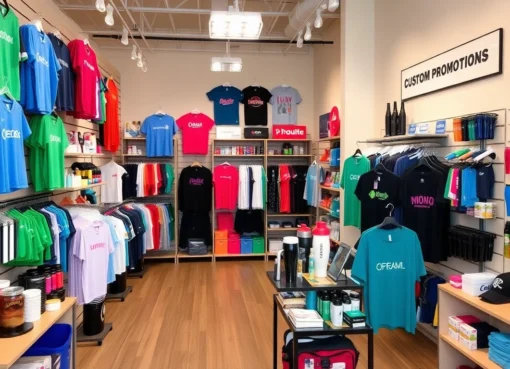Effective Custom Signs Strategies to Elevate Your Business Visibility

Effective signage is a cornerstone of successful business branding and marketing strategy. In an increasingly competitive landscape, the right signs do more than just identify your location—they communicate your brand personality, attract new customers, and enhance overall visibility. From eye-catching storefront signs to intricate digital displays, the diversity of signage options available today allows businesses of all sizes to craft a visual identity that resonates with their target audience. Leveraging high-quality custom signs tailored to your industry, budget, and branding goals can significantly elevate your market presence. In this comprehensive guide, we explore the expansive world of signage solutions, helping you navigate the choices and implement the most effective signage strategies for your business goals.
Understanding the Power of Custom Signs in Business Branding
Why Custom Signs Are Essential for Your Brand Identity
Custom signs serve as strategic branding assets that encapsulate your business’s unique identity. Unlike generic signage, custom signs are designed with your specific messaging, logo, color schemes, and overall aesthetic in mind, ensuring a consistent and professional presentation. They foster instant recognition, build trust, and differentiate your brand from competitors operating in the same space. For example, a custom metal sign with sleek, modern typography can communicate sophistication for a luxury retail store, while vibrant custom banners can energize a promotional event. Custom signs also allow for flexibility in size and material, ensuring compatibility with your physical environment and branding ambitions.
Key Elements of Effective Custom Sign Design
- Clarity and Readability: Your message should be instantly understandable. Use legible fonts and appropriate font sizes that can be read from a distance.
- Brand Consistency: Incorporate your logo, color palette, and fonts for seamless brand integration.
- Visual Hierarchy: Emphasize the most critical information, such as your business name or promotional message, through size, color, or placement.
- Material Choice: Select materials that suit your environment and aesthetic, whether it’s durable aluminum for outdoor signs or stylish acrylic for interior branding.
- Lighting and Effects: Consider illumination options like backlit or LED lighting to enhance visibility and impact, especially for night-time viewing.
Aligning Signage with Your Business Goals
Every sign should serve a clear purpose aligned with your overall marketing and operational objectives. Whether you aim to attract foot traffic, inform visitors, or promote a special offer, your signage must be designed to support those goals. For instance, if your objective is brand awareness, large-format building signs with prominent logos and consistent branding are essential. If you’re launching a new product, digital signage or promotional banners can deliver dynamic messages that adapt in real time. Conducting a signage audit—assessing existing signs’ effectiveness—can identify gaps and opportunities to better align your sign strategy with your business growth plans.
Choosing the Right Material and Style for Your Custom Signs
Materials Overview: Acrylic, Aluminum, Vinyl, and More
Material selection is fundamental to the durability, appearance, and performance of your signage. Each material offers distinct advantages and considerations:
- Acrylic: Popular for its sleek appearance and versatility; suitable for indoor displays and upscale signage. It can be customized with various finishes, including frosted or transparent options.
- Aluminum: Known for its durability and weather resistance, ideal for outdoor signage like monument signs and directional panels. It is lightweight and corrosion-resistant, making it a top choice for long-term installations.
- Vinyl: Flexible and cost-effective, perfect for temporary signage, vehicle wraps, or window decals. Vinyl can adhere to various surfaces and can be printed with detailed graphics.
- Wood: Offers a rustic, classic aesthetic; used often for artisanal or heritage brands. Requires maintenance to ensure longevity in outdoor settings.
- Other Materials: Such as brass, steel, polycarbonate, and fabric, each tailored to specific needs considering environment and design style.
Design Tips for Different Industry Types
Different industries demand tailored signage solutions:
- Retail: Bright, colorful banners and window decals attract shoppers and highlight promotions.
- Healthcare: Clear, compliant safety and ADA signs ensure accessibility and guide visitors effortlessly.
- Hospitality: Elegant, custom wall and exterior signs enhance ambiance and reinforce branding.
- Educational Institutions: Durable outdoor signs and informative indoor displays facilitate navigation and promote institutional pride.
Balancing Durability and Aesthetics in Sign Material Selection
The optimal signage balances form and function. While aesthetic appeal enhances visitor perception, durability ensures long-term performance and safety. For outdoor signs exposed to weather elements, materials like aluminum and high-grade vinyl provide protection against UV rays, rain, and wind. Indoor signs, conversely, can focus more on design finesse with materials such as acrylic or wood. Consulting with signage specialists can help match your visual goals with the environmental requirements, ensuring your signs remain vibrant and sturdy for years to come.
Integrating Digital and Traditional Signs for Maximum Impact
The Benefits of Digital & Electronic Custom Signs
Digital signage offers unparalleled flexibility and engagement capabilities. LED message boards, interactive screens, and digital displays allow businesses to communicate real-time updates, promotions, or event information. They can be programmed remotely, changing messages instantly to respond to market dynamics or special campaigns. Additionally, digital signs tend to draw more attention in busy environments, improving foot traffic conversion rates.
Traditional Signs That Complement Digital Displays
While digital signs provide dynamic capabilities, traditional signage remains vital. Rigid signs such as monument signs, fascia branding, and window decals serve as foundational elements that establish brand presence even when digital displays are off or malfunctioning. Combining digital and static signage creates a layered signage ecosystem that reinforces messaging and caters to varying customer preferences.
Case Studies: Successful Sign Integration Strategies
Many forward-thinking businesses integrate digital and traditional signage seamlessly. For example, a retail chain employs large static storefront signs for brand recognition, supplemented by digital screens for targeted promotions and real-time updates. This hybrid approach maximizes visibility, enhances customer experience, and increases sales conversions. Proper planning ensures the signs are cohesive in design and messaging—aligning visual identity across mediums.
Best Practices for Installing and Maintaining Custom Signs
Proper Installation Techniques for Longevity and Safety
Correct installation is critical to ensure your signs remain secure, functional, and compliant with safety standards. Use professional-grade mounting hardware suited to the sign’s weight and environmental conditions. Consider local regulations and obtain necessary permits to avoid legal issues. For outdoor signs, anchoring systems should withstand wind and weather exposure, minimizing maintenance and replacement costs.
Maintenance Tips for Keeping Signs Vibrant
Regular inspection and cleaning extend the lifespan of your signage. Use appropriate cleaning agents for materials—mild soap and water for acrylic, specialized cleaners for metal. Address issues like fading, corrosion, or physical damage promptly. For illuminated signs, check electrical components and lighting periodically to maintain optimal brightness and safety.
When to Update or Replace Existing Signs
Signs should reflect your current branding and marketing messages. Signs that are faded, damaged, or outdated can harm your credibility and reduce visibility. Consider updates when your branding evolves, or when signs no longer serve their intended purpose effectively. Upgrading to digital signage offers a cost-effective way to refresh content without replacing entire signs frequently.
Cost Considerations and ROI of Custom Signage
Budget Planning for Different Sign Types
Sign costs vary significantly based on size, material, complexity, and technology. Basic yard signs or window decals can be purchased for under $200, while large, illuminated, or digital signs can range from $2,000 to over $10,000. Planning an effective budget involves assessing your immediate needs, long-term goals, and ROI expectations.
Measuring the Impact of Custom Signs on Your Business
Signage effectiveness can be evaluated through increased foot traffic, sales, or brand awareness metrics. Tracking promotional campaign performance—such as discount code redemption or visitor surveys—provides data on signage ROI. Digital signs facilitate detailed analytics, allowing you to monitor engagement and adjust messaging accordingly.
Maximizing Value Through Sign Customization and Placement
Strategic placement amplifies signage impact. Position signs where they are most visible—primary entrances, high-traffic street corners, or near product displays. Customization elements like unique shapes, branded colors, and personalized messages strengthen recall and influence purchasing decisions. Investing in professional design and premium materials maximizes longevity and viewer engagement.
Conclusion
From impactful building signs to versatile banners, the diverse signage landscape offers abundant opportunities to elevate your business visibility and branding. By understanding the key concepts of custom signage design, material selection, integration of digital and traditional elements, and strategic placement, you can craft a compelling signage ecosystem that drives growth and reinforces your brand presence. Proper planning, execution, and maintenance not only ensure your signs remain visually appealing but also deliver measurable ROI. Investing in the right signage solutions—tailored to your specific industry and objectives—can profoundly impact your ability to stand out in a crowded marketplace. Let signage be a cornerstone of your business success strategy.


